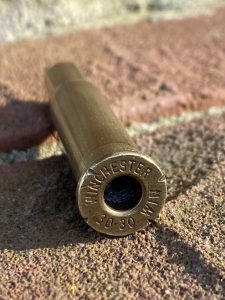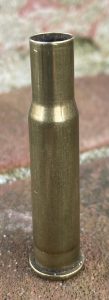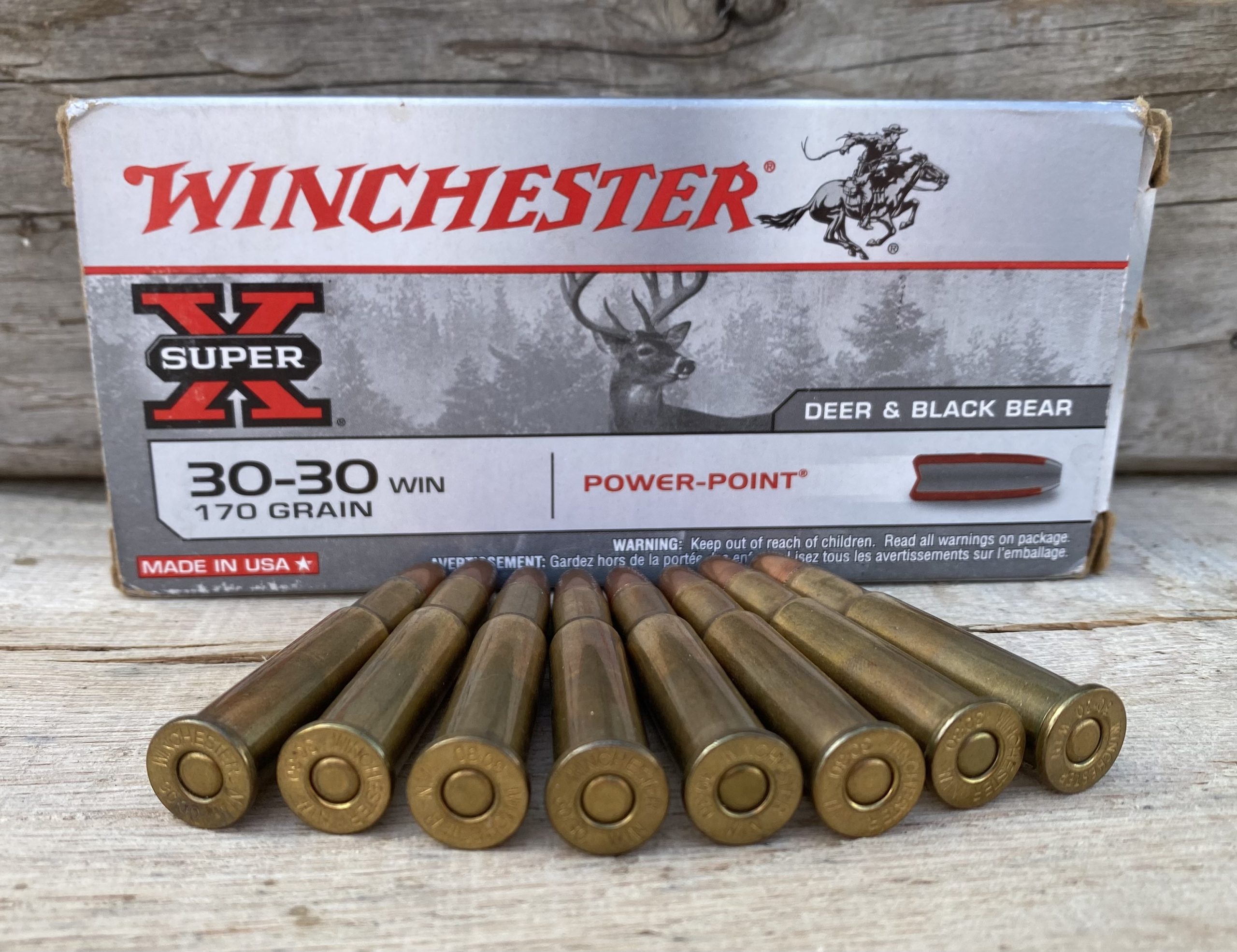Sometime back, I posed the question of “How many loadings to expect on full length sized 30-30 brass?” The responses I received were anywhere from “not many” to the usual suggestion of “why full length size when neck sizing is better for brass life?”.

So I decided to do a little test. I took a once fired Winchester case and loaded it until failure, keeping a record of each loading. I marked it’s head with 4 file marks so I could easily distinguish it. I loaded it anytime I loaded a batch of 30-30, and sometimes loaded it singularly as well.
The case was full length sized after each firing, and then measured. From the first trimming until the case grew past the maximum length it wasn’t trimmed. Then, it was trimmed to minimum length after each firing. Sometimes the trim length was short due to my inconsistent use of the trimmer, or using the test casing to set up the trimmer. I inside chamfered and outside deburred every time the case was trimmed. A roll crimp was used every loading. I did not anneal the case during this test.
The test gun is my Winchester 94 30-30 made in 1970.
Tools used; Lyman full length sizing die set (a few times I used a CH full length sizing die but did not record which times unfortunately. I did measure the shoulder setback and it was the same as my Lyman die ), Lyman 30 M die (short version), Lyman universal case trimmer with crank handle. For the reloading presses, I used either a Lyman Spartan or a Lee hand press. For lube I used one of two varieties, Imperial Sizing Wax or Hornady One Shot with no recorded distinction. Measurements were with RCBS calipers throughout.
The test would have been better if I’d used exactly the same methods every time, but at the time I was only trying to satisfy my own curiosity. Couple that with the testing taking several months to complete due to my loading the case in question during my normal loading of several various batches of 30-30 brass, and you can understand why this variation occurred; I loaded the case with my normal batches as I depleted my stock of 30-30 ammo and replenished it.
Cast bullets were all from air cooled clip on wheel weights with a pinch of tin added for fill out. My Lyman 450 was used for the Lyman 31141 bullets and those were sized .310, while a Lee push through Die in .309 was used for the Lee C309-150-F bullets. Hornady gas checks were applied during the sizing operation. Lube was White Label BAC on the Lyman 31141, LLA on the Lee C309-150-FN. The Lee bullet I loaded with a 1.9cc Lee dipper and did not trim until the case grew past max SAAMI length. I adjusted the seat crimp die each time to get a consistent crimp of about .o10, keeping the bullets seating depth at the top of the crimp groove.
Times fired, powder & charge, bullet, length after sizing, trim to length (TTL).
1. Factory fired, trimmed to 2.029
2. W748 29.0 gr, Lee 309-150-FN, 2.029
3. W748 29.0 gr, Lee 309-150-FN, 2.032
4. W748 29.0 gr, Lee 309-150-FN, 2.032
5. W748 29.0 gr, Lee 309-150-FN, 2.035
6. W748 29.0 gr, Lee 309-150-FN, 2.036
7. W748 29.0 gr, Lee 309-150-FN, 2.0365
8. W748 29.0 gr, Lee 309-150-FN, 2.038
9. W748 29.0 gr, Lee 309-150-FN, 2.039
10. W748 29.0 gr, Lee 309-150-FN, 2.041, TTL 2.027
11. Misfired factory bullet & powder, 2.032, TTL 2.028
12. W748 34.0 gr, Lyman 31141, 2.027, no trim
13. W748 32.0 gr, Lyman 31141, 2.029, TTL 2.026
14. W748 32.5 gr, Lyman 31141, 2.027, no trim
15. W748 32.5 gr, Lyman 31141, 2.031, 2.029
16. W748 32.5 gr, Lyman 31141, 2.032, 2.027
17. Unique 9.2 gr, Lee 309-150-fn no GC, 2.030, TTL no record
18. W748 32.5 gr, Lee 309-150-fn, 2.030, TTL 2.028
19. W748 32.5 gr, Lyman 31141, 2.032, TTL 2.028
20. W748 32.5 gr, Lyman 31141, 2.029, TTL 2.028
21. W748 32.5 gr, Lyman 31141, 2.029, TTL 2.027
22. IMR 3031 27.0 gr, Lyman 31141, 2.030, failure
That is a total of .040 trimmed off by my figuring, giving a value of .003 for number 17 which I forgot to record the trim length.
You might have noticed I didn’t say what the shoulder setback value was; .039 of an inch! The same for both dies, which surprised me, but the fact that it moved that much each resizing, and I was able to get the number of reloads that I did is really amazing.
After load 22 was fired, I resized using a Lyman full length hand die. After sizing, inspection revealed a crack on the shoulder. I decided to size with the hand die as the base of the body just above the web was slightly bulged and beginning to chamber with a slight resistance. This was the only time using the hand die, and I wonder if it caused the crack prematurely. Probably not as I used copious amounts of Imperial Sizing Wax. However, one can only speculate on this, and this is a mistake I’ll not make on subsequent tests. 
After each firing I carefully inspected the case for cracks and defects. I paper clip tested many times, checking for incipient case head separation. The primer pocket remains tight.
I started this test with the intent to record the number of times fired between trim to length and max length. It then turned into a longevity test. Obviously this isn’t conclusive as it dealt with only one case of one manufacture. Not to mention the variables I introduced with varying trim lengths, using 2 sizing dies (mostly Lyman), 2 presses used, though that will have little real effect, and 2 kinds of case lube used. It has been fun for me, and I’ve learned that full length sizing is not the 5-8 load brass killer I’ve heard, at least in my chamber with my dies, and my loading techniques.

